Alright – so today we’ve got the honor of introducing you to Marguerite Elliot. We think you’ll enjoy our conversation, we’ve shared it below.
Marguerite, thanks for taking the time to share your stories with us today Can you talk to us about a project that’s meant a lot to you?
In the last five years, homelessness has emerged as a prominent concern in most American cities. However, back in the 80s, when I lived in downtown Los Angeles, the issue was significant and largely overlooked. Amongst the many, two men regularly traversed the streets near my studio with their shopping carts, scavenging through dumpsters for recyclables or discarded food from local cafes. They frequently slept in the entrance to my industrial studio building.
I watched their daily struggles from my third-floor window in the old brick building. Over time, I gradually developed a relationship with Larry and Joe. Our conversations, initiated while sitting on the curbside, inspired me to create several large installations addressing the plight of the homeless. In one piece, I created life-size sculptures of two men and a woman huddled around a barrel with an electrical fire hidden within. Another installation featured life-size sculptures of Larry and Joe with their shopping carts beside a wooden dumpster, typical of those found on the streets, all painted black. To amplify their voices, I interviewed Larry and Joe, placing the recordings in the dumpster for viewers to hear as they walked by.
Portraits of Larry and Joe, captured while sitting on the curb or standing by their carts, were presented as large photographs alongside the sculptures in the gallery. These installations were showcased in Los Angeles and San Francisco in the early 80s, long before homelessness gained widespread attention. The opportunity to intimately understand the lives of Larry and Joe, so different from mine, and their willingness to share their stories, remains a profound and grateful aspect of my personal consciousness and artistic journey.
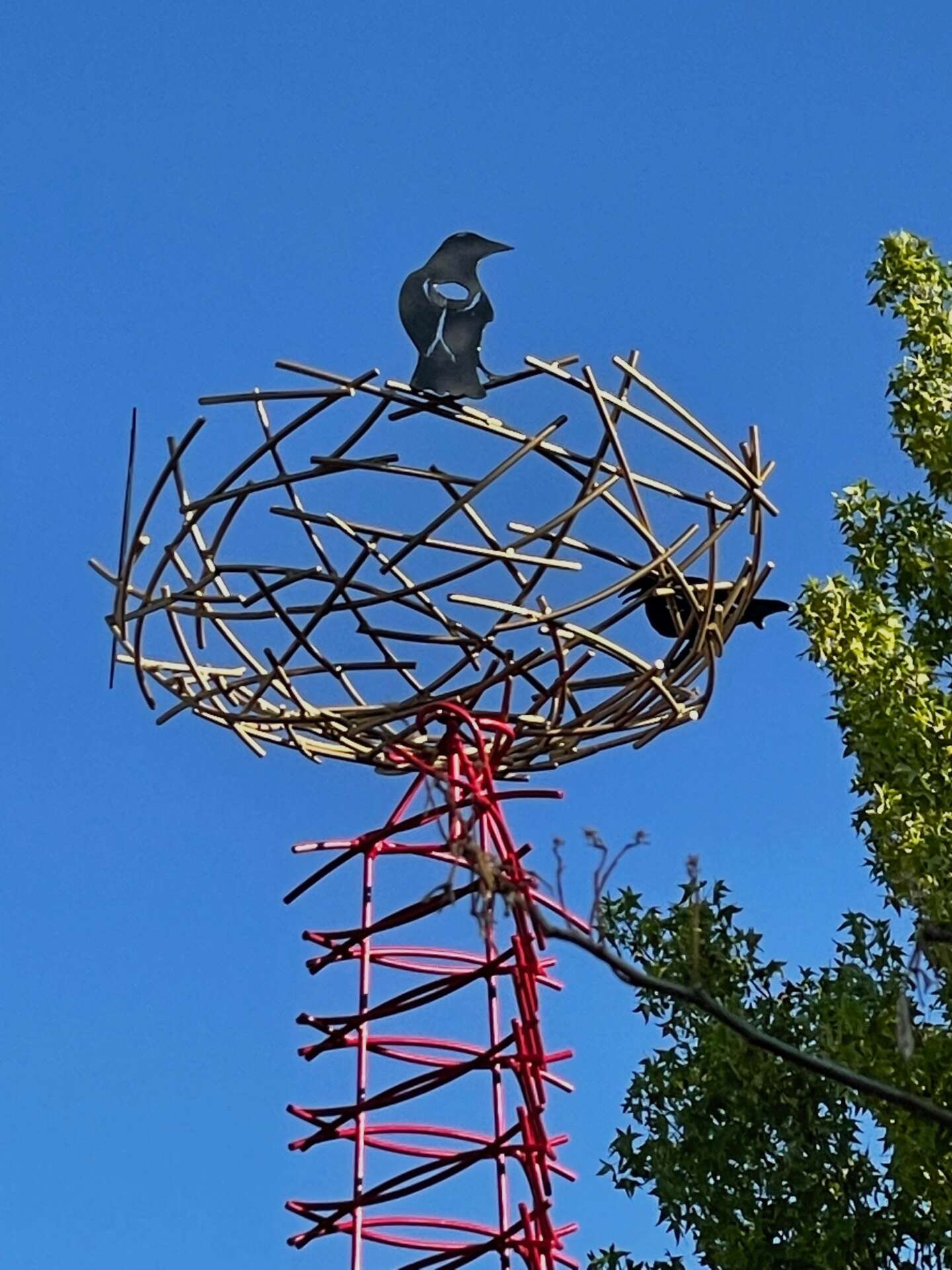
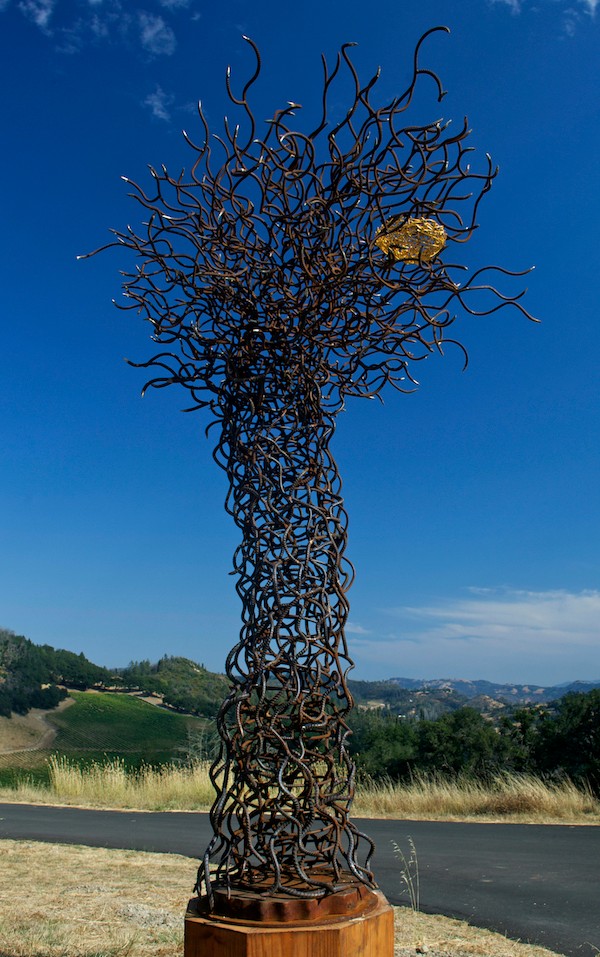
As always, we appreciate you sharing your insights and we’ve got a few more questions for you, but before we get to all of that can you take a minute to introduce yourself and give our readers some of your back background and context?
I’m an international environmental artist who primarily works in steel. I have been welding for many years. What is unusual about me is that I work in what is traditionally a male dominated profession. There are very few women who weld, and even fewer that create large scale public sculpture. Even though it is physically difficult and very arduous work, it is important to have environmentally themed art work out in the public. I have also been awarded seven artist residencies, four of which are in Europe. As a result of these residencies in Europe and the United States, I have large scale sculptures in many sculptures parks. It has also given me the opportunity to collaborate with many talented international artists. I also love doing private commissions.
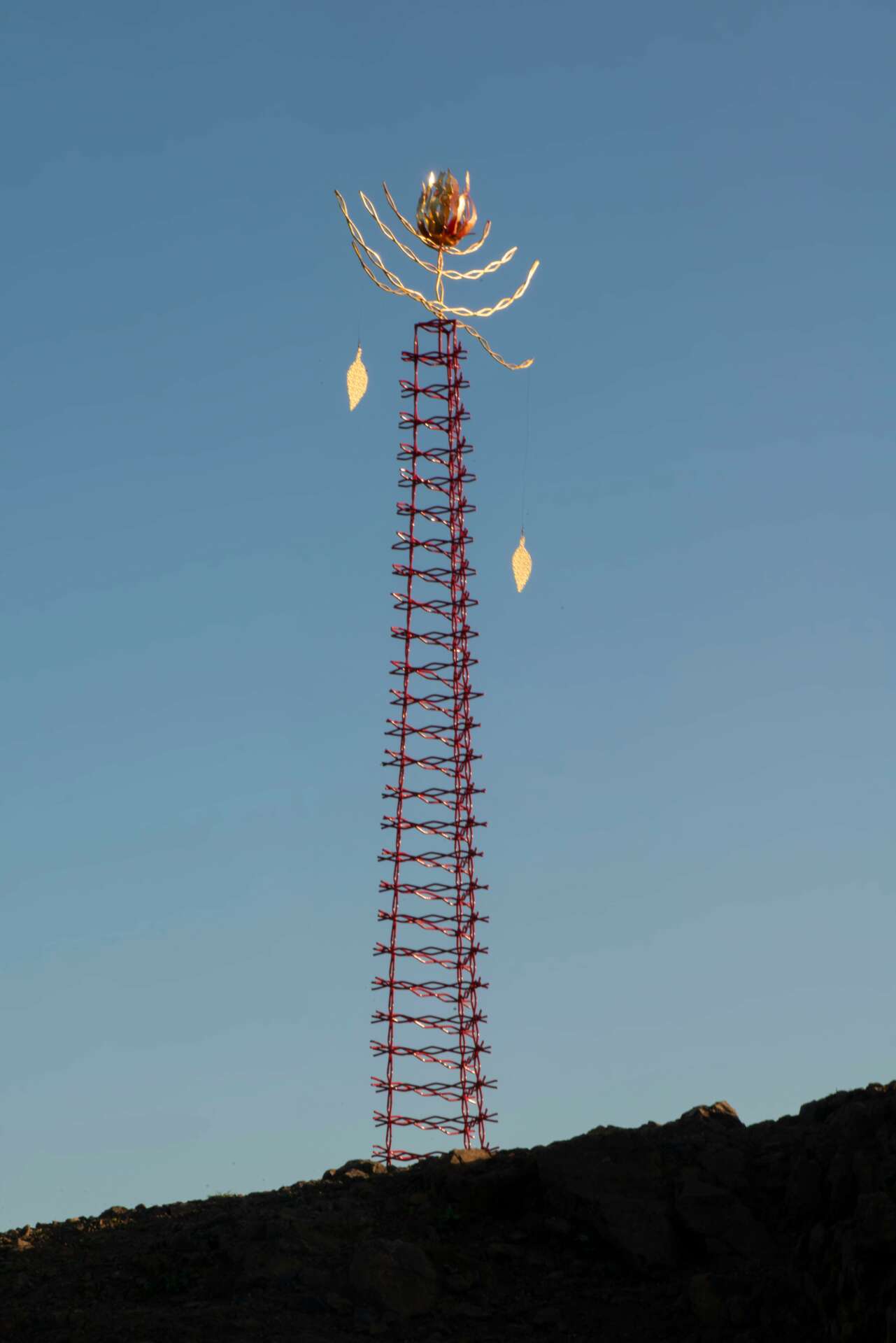
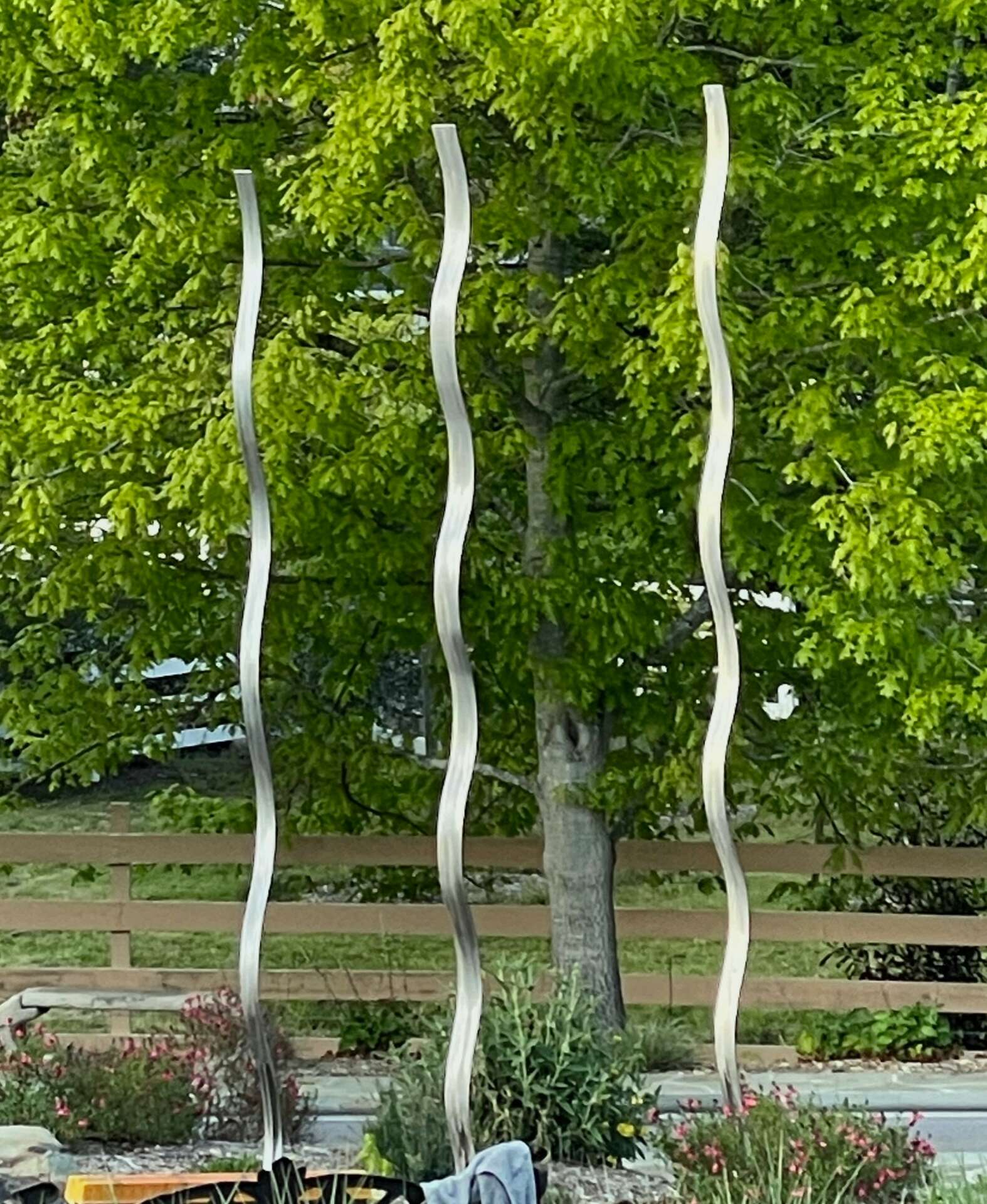
What do you find most rewarding about being a creative?
In the last five years, homelessness has emerged as a prominent concern in most American cities. However, back in the 80s, when I lived in downtown Los Angeles, the issue was significant and largely overlooked. Amongst the many, two men regularly traversed the streets near my studio with their shopping carts, scavenging through dumpsters for recyclables or discarded food from local cafes. They frequently slept in the entrance to my industrial studio building. I watched their daily struggles from my third-floor window in the old brick building. Over time, I gradually developed a relationship with Larry and Joe. Our conversations, initiated while sitting on the curbside, inspired me to create several large installations addressing the plight of the homeless. In one piece, I created life-size sculptures of two men and a woman huddled around a barrel with an electrical fire hidden within. Another installation featured life-size sculptures of Larry and Joe with their shopping carts beside a wooden dumpster, typical of those found on the streets, all painted black. To amplify their voices, I interviewed Larry and Joe, placing the recordings in the dumpster for viewers to hear as they walked by.
Portraits of Larry and Joe, captured while sitting on the curb or standing by their carts, were presented as large photographs alongside the sculptures in the gallery. These installations were showcased in Los Angeles and San Francisco in the early 80s, long before homelessness gained widespread attention. The opportunity to intimately understand the lives of Larry and Joe, so different from mine, and their willingness to share their stories, remains a profound and grateful aspect of my personal consciousness and artistic journey.
The most rewarding aspect of being an artist, for me, is the profound satisfaction derived from the impact my work has on individuals. When people express their love for my sculptures in public parks or other public spaces, and share how the pieces have prompted them to contemplate environmental issues, it’s genuinely fulfilling. During the pandemic, I was invited to install “California Sentinel: Eco-Warrior” in downtown Fairfax, California. After seeing my work, Mayor, Renee Goddard wrote: “We speak often of the healing power of art. Art reminds us to look below the surface and find the light in times of darkness.” Whether my sculptures are nestled in public gardens or private spaces, learning that they bring joy to people’s lives is a moving experience that underscores the meaningful connection between art and its audience.
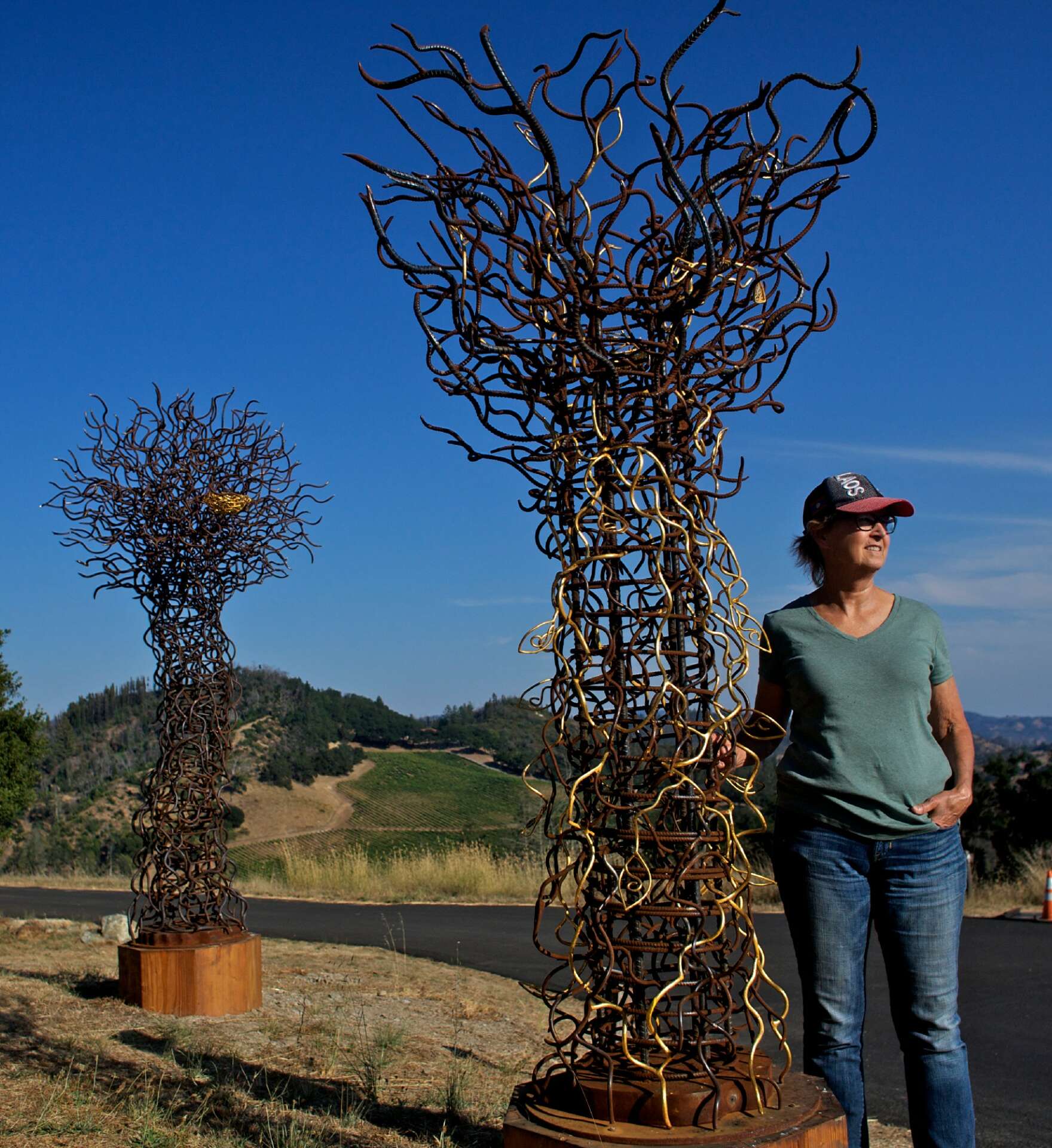
Is there mission driving your creative journey?
My creative journey is fueled by a dual commitment to creating art that is both aesthetically compelling and socially impactful. During the 70s and 80s, when I resided in Los Angeles, my focus was on feminist issues, nuclear proliferation, homelessness, and child labor. Through public installations in front of prominent institutions like Los Angeles City Hall and the California Institute of Technology, I aimed to shed light on the dangers of the arms race for nuclear weapons, encouraging people to take action.
Upon relocating to the San Francisco Bay area in the 90s, my passion for the environment became a central theme in my work. I dedicated myself to highlighting the ongoing environmental crisis and inspiring others to play a role in preserving our planet. A current project of mine is a fifteen-foot sculpture titled “Where Have All The Birds Gone?” at the Newport Beach Civic Center Sculpture Park in California. This piece features a towering structure with a four-foot gold-leafed bird’s nest, atop which two symbolic birds gaze into the distance. The sculpture serves as a poignant reminder of the loss of two billion birds over the past fifty years due to human activities. Another example is a public sculpture titled “Medusa Trees” that highlights the incredible beauty of trees while also noting that one in six species of trees is endangered.
In essence, my creative mission revolves around raising awareness of pressing social and environmental issues and motivating individuals to take meaningful action.
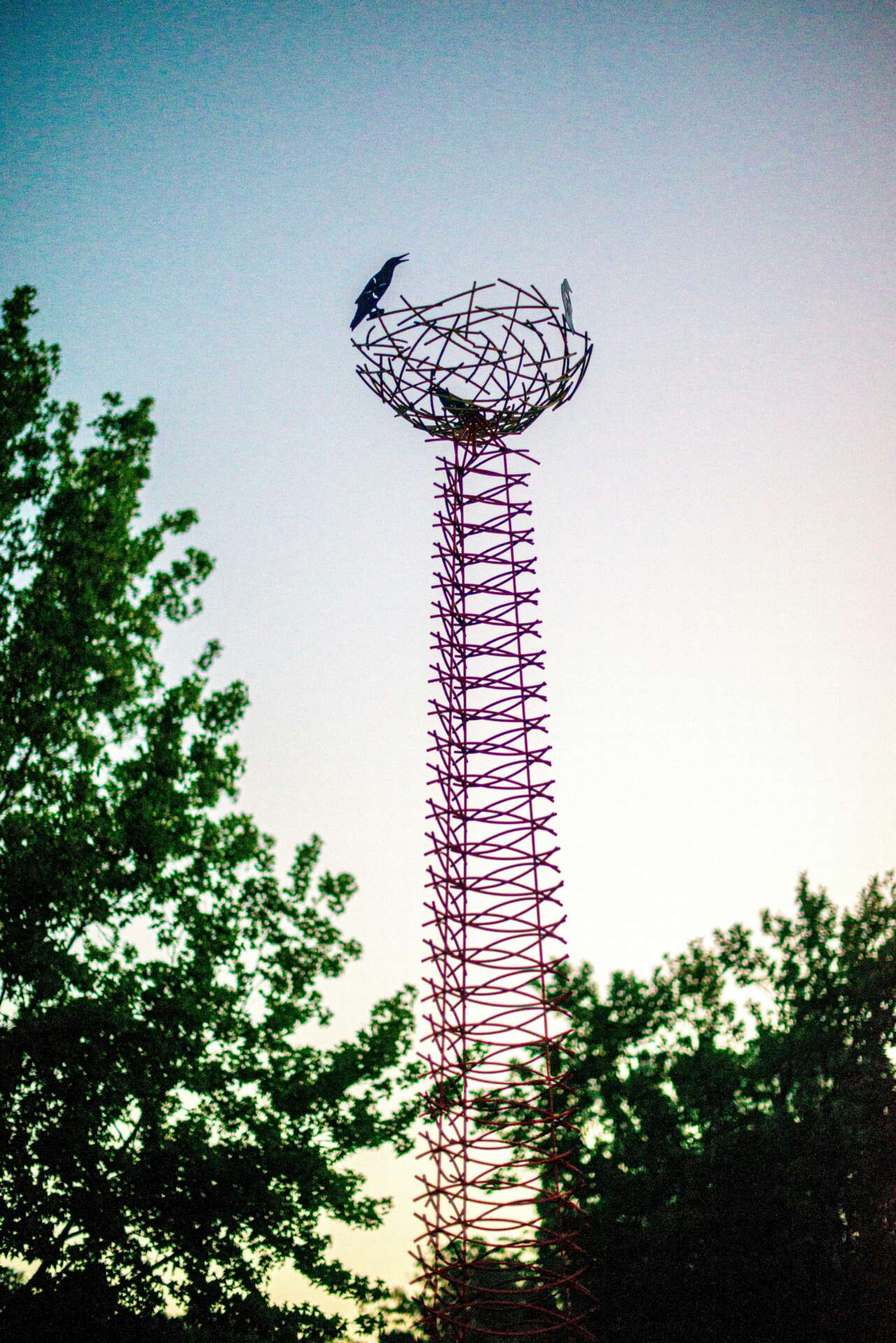
Contact Info:
- Website: https://www.margueriteelliot.com/
- Instagram: https://www.instagram.com/marguerite101/
- Facebook: https://www.facebook.com/marguerite.elliot


